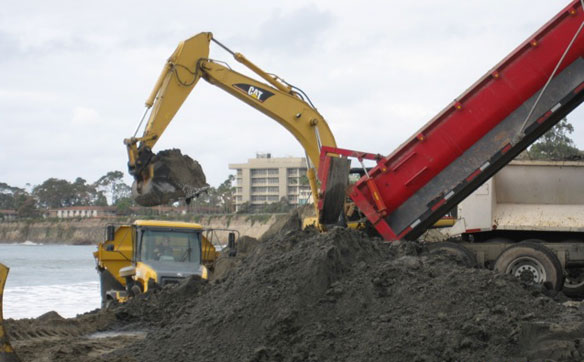
Beach re-nourishment, California. Photo source: © SAF — Coastal Care
By Robert Young, Program for the Study of Developed Shorelines, Western Carolina University, Cullowhee, North Carolina, United States
Abstract:
Over the last several decades, beaches on the US Atlantic and Gulf Coasts have experienced rapid development. The vast majority of this development is in the form of vacation homes and investment property.
As the value of coastal property has skyrocketed, the demand to protect these investments from coastal erosion and storms has grown. The result has been a massive transformation of America’s beaches from fully functioning, geomorphic systems with high quality habitat to non-stop engineering projects designed primarily to function as storm buffers for infrastructure.
The most prevalent form of coastal engineering along US beaches today is beach nourishment (rebuilding the beach by pumping sand from another source). Proponents now prefer to use the term “beach restora- tion”. Yet, rebuilding beaches in this way does not meet any of the requirements for environmental restoration as defined by the Society for Ecological Restoration International.
In addition, a recent study commissioned by the US National Park Service and conducted by the Program for the Study of Developed Shorelines indicates that even the supposedly protected National Seashores of the US East and Gulf Coasts have had significant impacts from coastal engineering activities.
It is critical that any beaches that still have fully functioning physical and biological systems be identified and protected. We do not need to protect them from erosion. We need to protect them from those who wish to stop the erosion at any cost.








